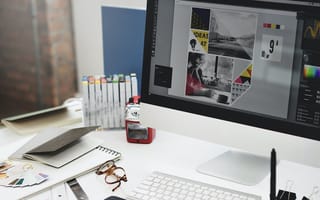Time travel might be an improbable feat. But with a proper design sprint, fast-forwarding into a product’s future is more than possible.
Consisting of five phases (map out, sketch, decide, prototype and test), the design sprint aims to be a quicker, more efficient way of introducing new products or improving current features over a week-long period. By compressing months of time into a shorter window, various teams hope to end the process with a successful failure, a flawed win or a resounding victory.
For more than a decade, the adoption of the design sprint has grown in popularity, and so too have the methods in which it can be conducted.
At retail commerce platform OneView Commerce, for example, planning out a diverse cross-functional sprint team can lead to faster idea testing and minimizing waste for both their internal organizations and their clients. It also prevents meeting overload.
“It is not a linear process,” Jennia Williamson, director of product and strategy design at OneView, said. “The design sprint ends with a rough prototype tested from various perspectives, which can be a strong base for learning during future sprints.”
Music software company iZotope approaches sprints differently. According to Senior Design Director Kasia Bytnerowicz, allowing designers to take the reins helps other teams align on design principles and promotes productive discussions over personal preferences.
Built In Boston sat down with Bytnerowicz and Williamson for additional insight into their teams’ design sprint processes and the surprisingly beneficial ideas that have come about as a result.
What does a typical design sprint look like for your team and who is involved?
At iZotope, most of our designers are embedded on product teams where they participate in cross-functional sprints, so there isn’t a typical design sprint. The product teams hold Innovation Weeks, which brings together designers, engineers, product managers and marketers. There is usually one designer and six or seven non-designers who break up into teams of two or three for the week. The designer develops a culture of design thinking through a shared understanding of our customers and the problem space. Before each team starts on their project, the designer helps the team define guiding principles that’ll evaluate which solutions to pursue. The designer checks with each team during the week to help refine ideas. They also organize user interviews to validate that the solutions meet the customers’ needs.
In order to give designers an opportunity to work more cross-functionally and on other projects across the brand, we started experimenting with a concept of a Design Week two or three times a year. Design Week gives designers an opportunity to work with other designers on projects of their choice.
What is the key to a successful sprint, and why?
First, it’s the collaboration between designers and those working cross-functionally. We have many creative and talented people across iZotope, and it’s the designers who are encouraged to bring their ideas forward and help them take shape. It is important to start a sprint with a shared understanding of the success criteria. The designers help the team to align on the design principles, and each solution is evaluated based on those. This encourages productive discussions over preferences and focuses the team on the task at hand.
It is important to start a sprint with a shared understanding of the success criteria.”
What’s the coolest or most impactful idea or design that has come out of a design sprint?
An idea that came out of our latest Design Week was an interactive product picker for our website. People new to audio production sometimes have problems figuring out which product to buy. This picker asks them about what type of results they hope to achieve and then recommends the right product or membership. It also helps us learn more about our customers so that we can build better products and offer them articles and videos to help them develop their skills.
What does a typical design sprint look like for your team and who is involved?
OneView is a fast-paced and distributed company, and we must sustain a highly collaborative and innovative environment while minimizing the meeting and documentation overload. Lean UX practice helps us integrate the design process with a one-week release schedule and Scrum practices.
On average, it takes us a week to complete a design sprint. We start by reviewing the current knowledge base and assumptions with our user advocates, who conduct continuous discovery. Once everyone understands the problem statement and the hypothesis, we start sketching and ideating. At this point, it is not a linear process, which typically involves the following activities: additional discussions with customers to fill in the blanks, architectural review, and a UI Tribe review. All artifacts created through each brainstorming session are shared with everyone. Often these artifacts aren’t pretty, but they help everyone to stay aware of the latest information. The design sprint ends with a better-defined scope and a rough prototype tested from various perspectives, which can be a strong base for learning during future sprints.
What is the key to a successful sprint, and why?
It is crucial to have a highly collaborative and structured environment to design technically sound and marketable solutions that solve real problems. A diverse cross-functional team with a high product IQ and shared understanding can test ideas faster and minimize waste. A pitfall could be meeting overload, so at OneView, we also value structure and processes. Luckily, many great technologies help us collaborate without having a lot of meetings. Even something reasonably low tech as sharing a recording with a voice-over of the latest prototype update ahead of the meeting saves a lot of time.
It is crucial to have a highly collaborative and structured environment to design solutions that solve real problems.”
What’s the coolest or most impactful idea or design that has come out of a design sprint?
One of the most passionate design sprints we have ever had was at the beginning of the COVID-19 pandemic. Food supply disruptions impacted us all, so everyone was committed to helping retailers of all sizes offer curbside pickup while owning the customer journey. The time to ship was our primary constraint, so everyone was hyper-focused and driven. As a result, we came up with several ideas ranging from short to long term: Pick and Pack App, Digital Cart, and Digital StoreFront, all built on top of our headless architecture.









